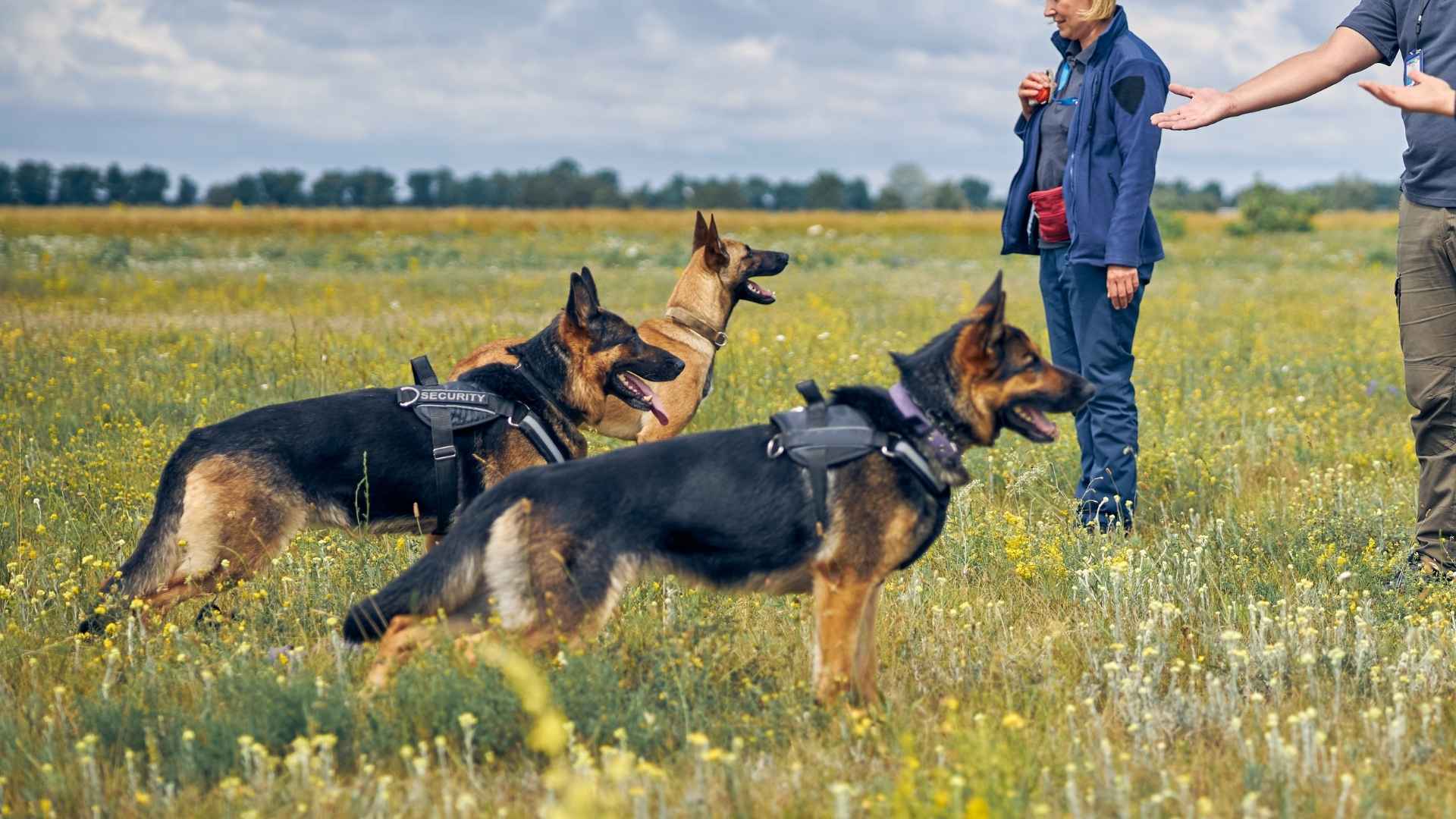If you’ve ever been amazed at how fast your pup learns a new trick—or outsmarts your best efforts to keep snacks out of reach—you’ve seen canine intelligence in action. While all dogs bring loyalty, love, and companionship into our lives, some breeds stand out for their exceptional smarts. These clever canines go beyond basic obedience and often showcase problem-solving skills, quick adaptability, and an uncanny knack for reading human cues.
But being labeled a “super-smart” dog isn’t just about being the first to master “sit” or “stay.” Intelligence in dogs reveals itself in different forms: some breeds thrive on structured tasks and complex training, while others show off their smarts by improvising—sometimes in ways that challenge dog owners’ patience. These dogs can be both a joy and a handful, especially for first-time pet parents.
So, if you’re searching for a brilliant furry companion that can keep up with your active brain and lifestyle, this list of super-smart dog breeds is the perfect place to start your journey.
Super-Smart Dog Breeds
1. Australian Cattle Dog
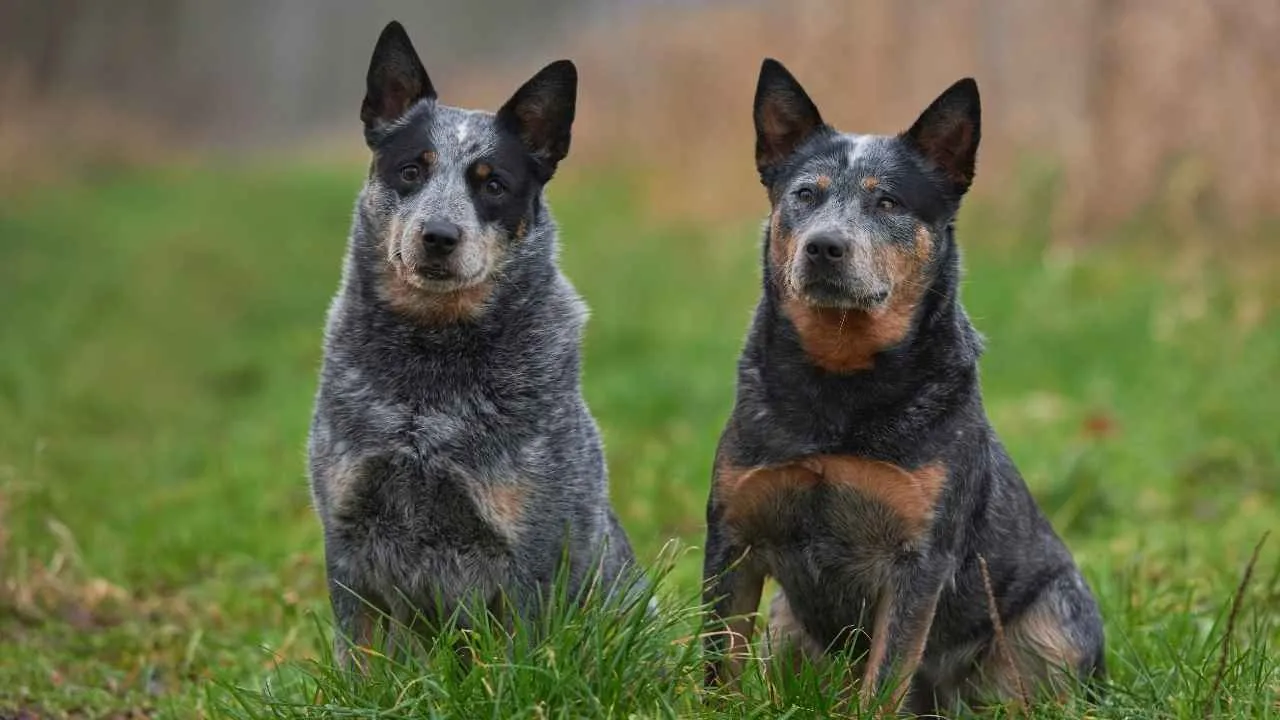
The Australian Cattle Dog, also known as the Blue Heeler, Red Heeler, or Queensland Heeler, is a brilliant, hard-working breed developed in 19th-century Australia to herd cattle across rugged terrain.
The AKC explains that the Australian Cattle Dog (ACD) is initially born with a white coat, which later develops into either a blue-gray or red hue, often marked with unique speckled or mottled patterns.
Compact and muscular, these medium-sized dogs stand between 17 and 20 inches tall and weigh 35 to 50 pounds. Their dense double coat is weather-resistant, making them suited for tough outdoor jobs.
With a life span of 12 to 16 years, ACDs are known for their intelligence, loyalty, and unmatched stamina. Bred from native Dingoes and various herding breeds, they thrive on both mental stimulation and purposeful tasks.
Exercise
True to their herding lineage, Australian Cattle Dogs possess boundless energy and a relentless work ethic. They require at least 60 to 90 minutes of daily exercise, including activities that engage both their bodies and minds. Without adequate stimulation, they can become bored and destructive.
These dogs shine in agility, obedience, and herding trials—any activity that mimics their natural instincts. Routine physical challenges are not optional for this breed; they are essential to their well-being and overall happiness.
Fun Fact: Australian Cattle Dogs are born with a white coat that gradually turns blue or red as they mature.
2. Border Collie
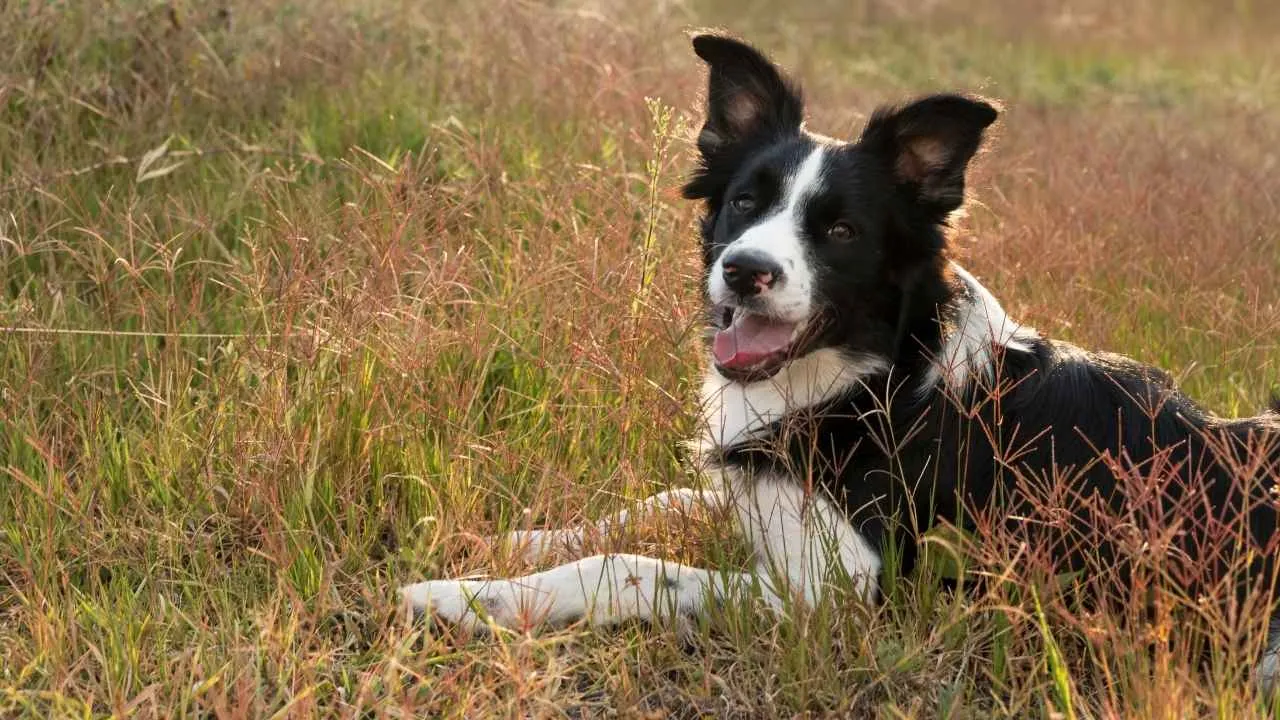
Known as the brainiacs of the canine world, the Border Collie is a medium-sized herding breed known for its agility and work ethic. Standing between 18 to 22 inches tall and weighing 30 to 55 pounds, this athletic dog boasts a lean, muscular build and an expressive face with almond-shaped eyes that reflect sharp alertness.
Border Collies come in both rough and smooth coat varieties, with color patterns ranging from classic black and white to merle or tricolor combinations. WebMD states that Border Collies were originally bred for their intelligence and obedience, primarily to herd sheep, though they also managed other types of livestock.
They belong to the herding group and typically live 12 to 15 years. Their keen instincts and eagerness to please make them favorites among farmers, trainers, and competitive dog sport enthusiasts.
Exercise
Border Collies thrive on both mental and physical stimulation. These dogs require at least two hours of daily exercise to stay content and healthy. Long walks or obedience tasks are essential to satisfy their sharp minds and active bodies. Without adequate outlets, they may resort to undesirable behaviors.
A fun fact: Border Collies can learn a new command in under five repetitions and obey it 95% of the time, as shown in Stanley Coren’s intelligence rankings.
3. English Springer Spaniel
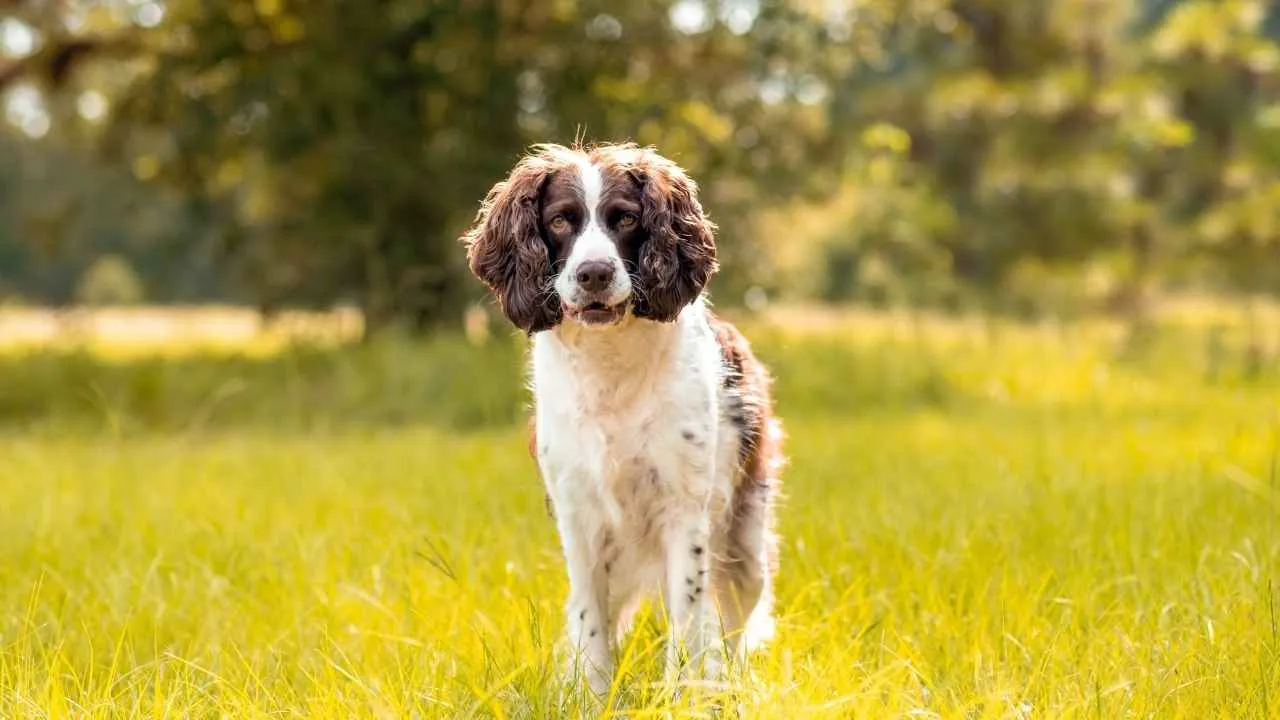
Bred for versatility, the English Springer Spaniel is a medium-sized sporting breed known for its agility, intelligence, and eagerness to please. Originating in England, these dogs were originally developed to flush and retrieve game, and they remain one of the most trainable and affectionate breeds today.
With a soft, expressive face and long, feathery ears, this breed exudes friendliness and warmth. Britannica notes that the English Springer Spaniel is a medium-built, sturdy dog that typically stands between 19 and 20 inches tall and weighs around 40 to 50 pounds.
Their double coat comes in combinations like black and white or liver and white, often with ticking or roan markings. Springers generally live 12 to 14 years and are a beloved choice for active families seeking a loyal, intelligent companion.
Exercise
These bright dogs are high-energy and require 1 to 2 hours of physical activity daily. Activities like long walks, fetch, swimming, or agility games help keep them mentally and physically stimulated. Their intelligence thrives on structure, so engaging them in training or scent games also prevents boredom.
Fun Fact: Despite their polite demeanor, Springer Spaniels have a mischievous streak—they’re known to “retrieve” things around the house when bored!.
4. Golden Retriever
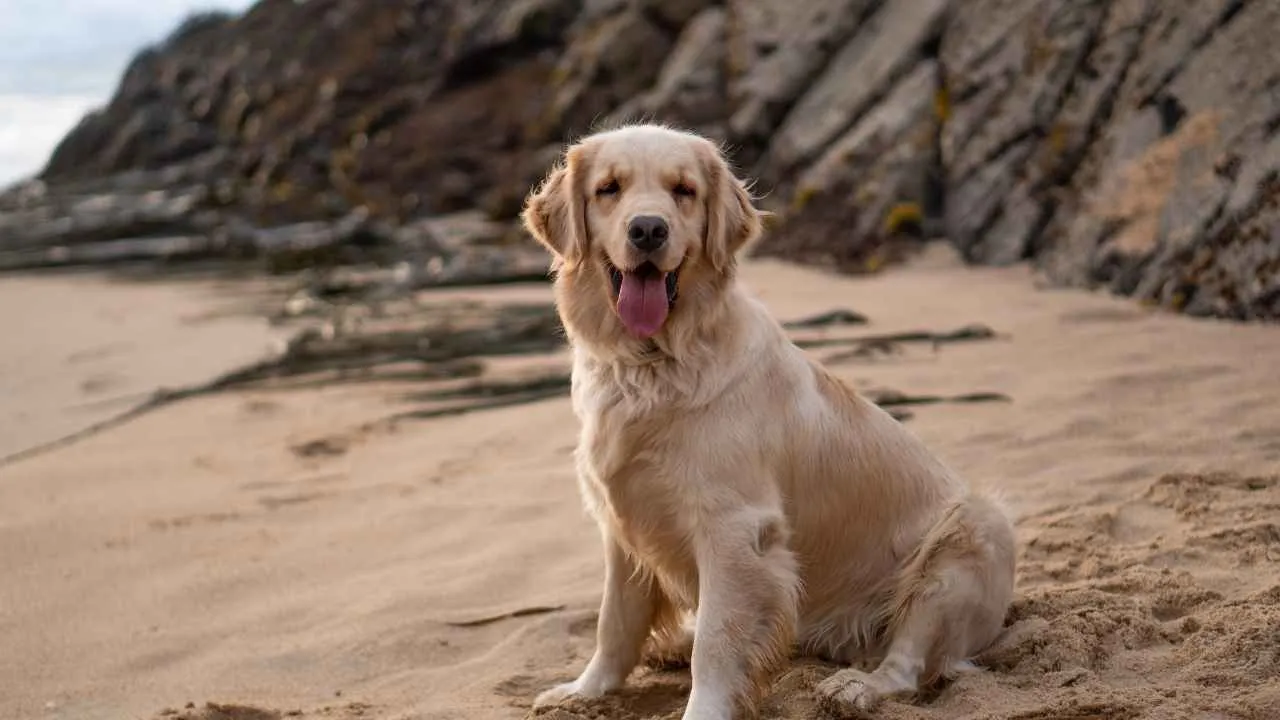
With roots in 19th-century Scotland, the Golden Retriever was originally developed by Lord Tweedmouth as a versatile gundog, skilled in retrieving waterfowl across land and water.
Standing 23–24 inches tall and weighing between 65–75 pounds, these sturdy, athletic dogs are renowned not just for their golden, feathered coats, but also for their kind, intelligent eyes and joyful personalities.
Belonging to the Sporting Group, Goldens are consistently ranked among the most beloved breeds thanks to their trainability, loyalty, and adaptability. Their typical life span ranges from 10 to 12 years.
Exercise
Golden Retrievers thrive with both physical and mental engagement. These active dogs require daily exercise—ideally one to two hours split between walks, play, and structured training. As natural swimmers and retrievers, they excel in fetch games and water-based activities.
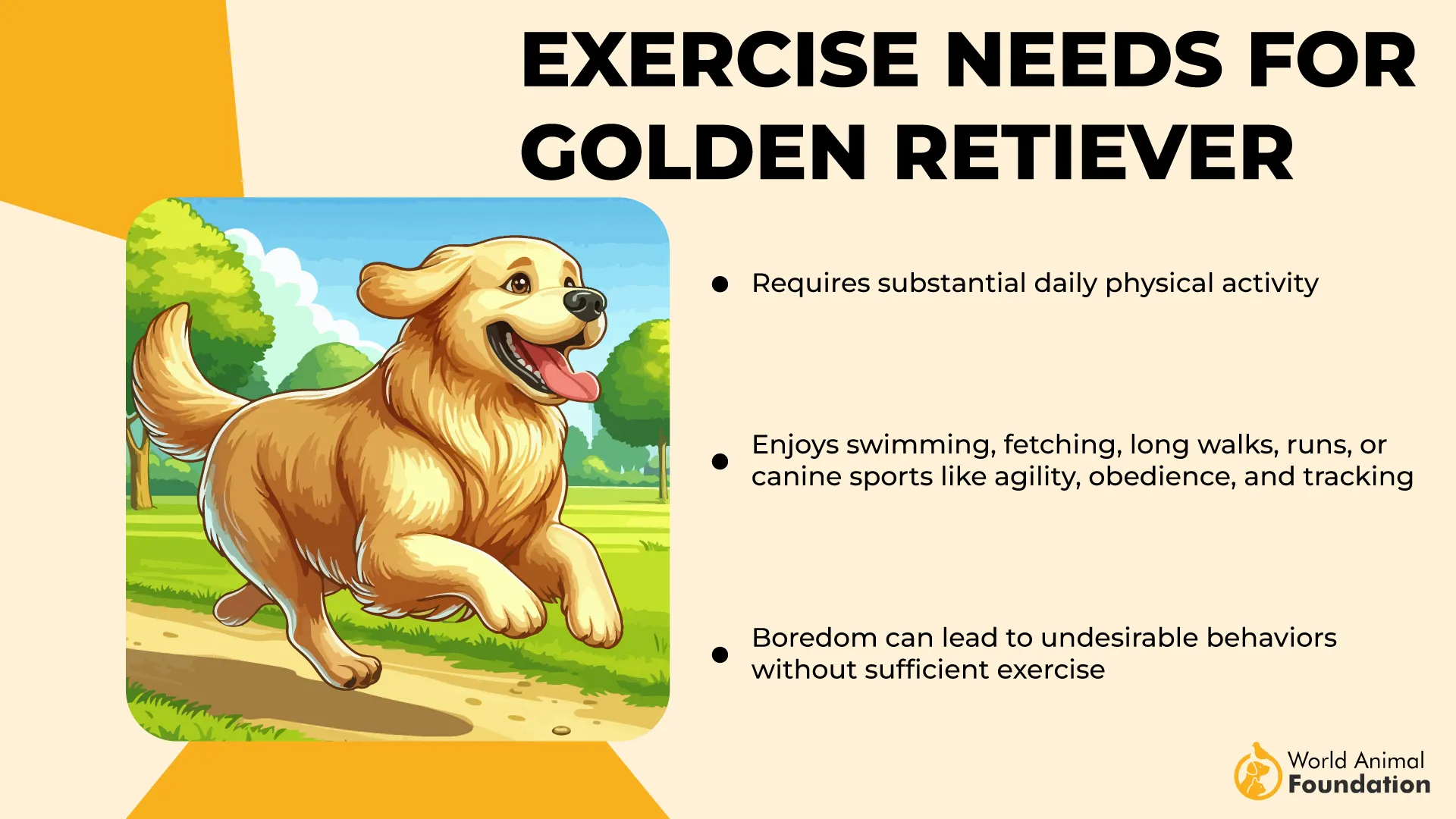
Their working heritage makes them ideal for dog sports like obedience and even scent work. Without sufficient stimulation, they may develop behavioral issues due to boredom or excess energy.
Fun Fact: The most detailed records of the Golden Retriever’s development span from 1835 to 1890, preserved in the gamekeepers’ books at the Guisachan estate, offering rare insight into this breed’s storied past.
5. Labrador Retriever
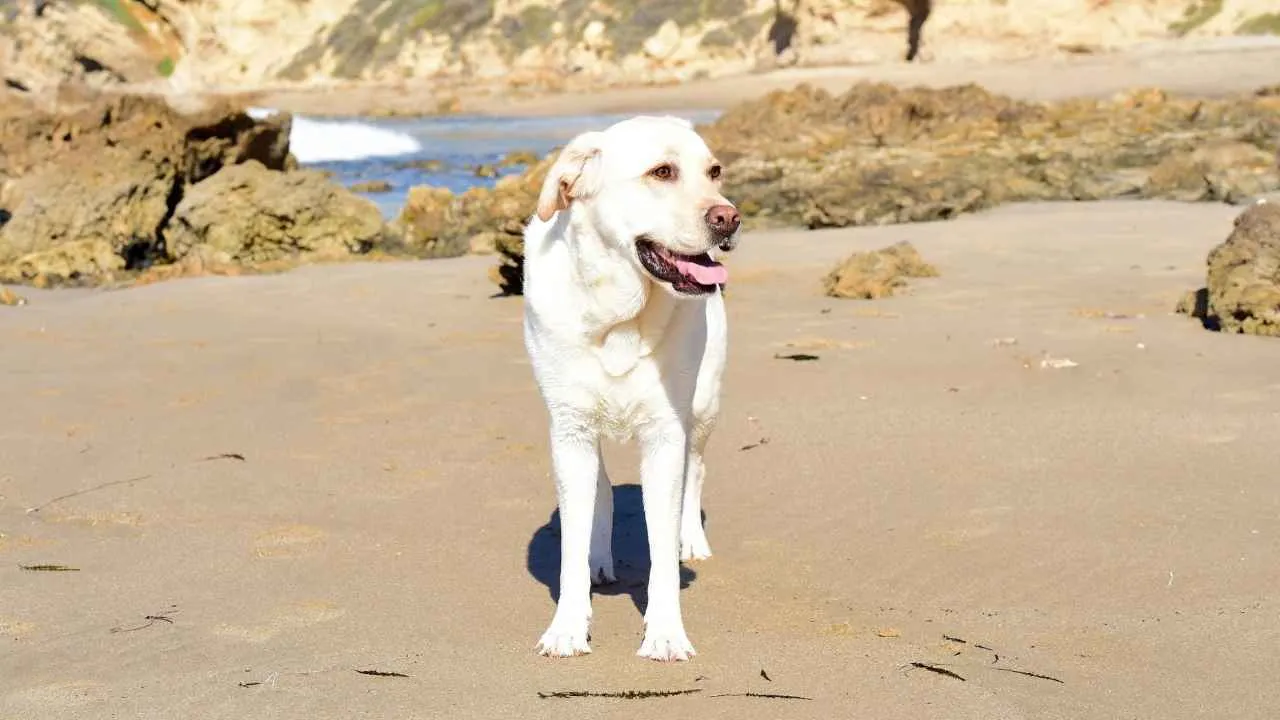
The Labrador Retriever, affectionately known as the Lab, is one of the most popular and intelligent breeds in the world. Originally bred in Newfoundland to assist fishermen, Labs became known for their versatility, eventually being refined in England as retrieving dogs.
Standing between 21.5 and 24.5 inches and weighing 55 to 80 pounds, these medium-to-large dogs sport a short, dense coat in black, yellow, or chocolate, with a distinct “otter tail” and kind, expressive eyes. Belonging to the Sporting Group, Labs typically live 10 to 12 years and are celebrated for their loyalty, friendliness, and eagerness to please.
Exercise
Labs are energetic athletes who need regular physical and mental activity to stay happy and healthy. At minimum, they require one to two hours of exercise daily, which can include swimming, long walks, or high-paced games of fetch.
Without enough stimulation, Labradors may become bored and resort to destructive behaviors like chewing or digging. Their love for food also makes exercise essential to prevent obesity. Including interactive play and training sessions not only satisfies their bodies but also stimulates their sharp minds.
Fact: Labrador Retrievers rank 7th in Stanley Coren’s list of the most intelligent dog breeds, highlighting their ability to learn commands quickly and perform specialized tasks.
6. Miniature Schnauzer
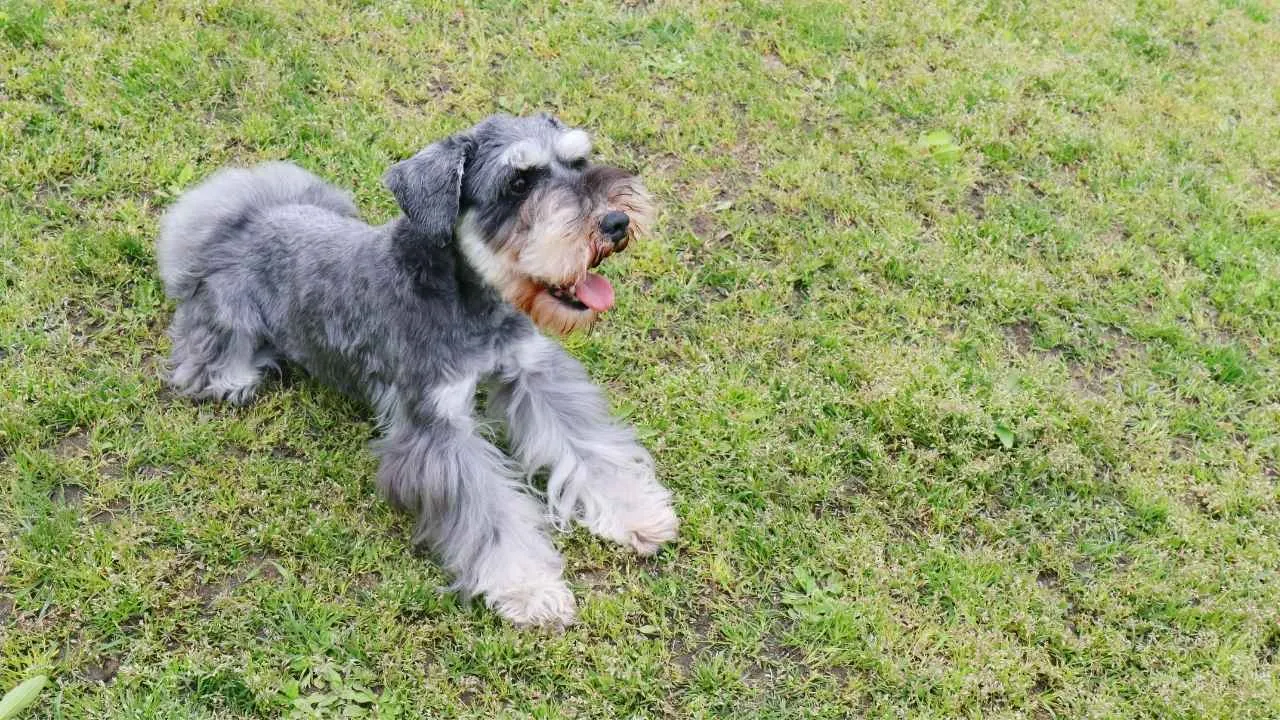
Compact and clever, the Miniature Schnauzer stands out as the smallest member of the Schnauzer family, yet it carries the same confidence and tenacity as its larger relatives. Bred in Germany as efficient ratters and versatile farmhands, these sturdy dogs average 11 to 14 inches in height and weigh between 10 to 15 pounds.
They typically live 12 to 15 years and belong to the terrier group. With their distinctive bushy eyebrows and wiry beard, Miniature Schnauzers display a charming human-like expression. Their wiry coats come in salt and pepper, black and silver, or solid black, and they shed very little, making them ideal for allergy-sensitive households.
Exercise
Miniature Schnauzers are highly energetic and thrive on regular mental and physical activity. They require at least one hour of daily exercise, which can include stimulating games like fetch and puzzle toys.
Their alert nature and eagerness to please make them excellent candidates for obedience competitions and dog sports. Keeping them engaged helps prevent boredom-related behaviors, and they adapt well to both apartments and homes with ample space.
Fun Fact: Miniature Schnauzers are so sharp that they can learn new commands in as few as 5 to 15 repetitions and often obey on the first command.
7. Papillon
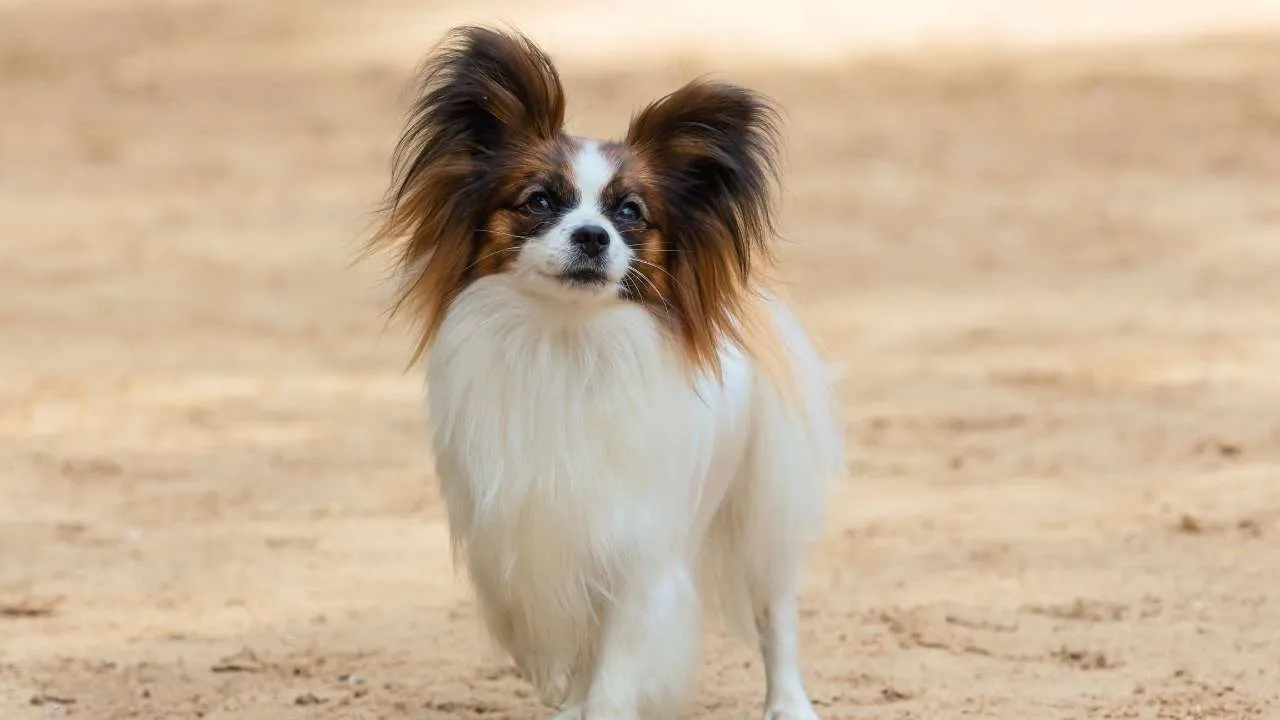
The Papillon, also known as the Continental Toy Spaniel, is a dainty yet dynamic breed celebrated for its intelligence and distinct butterfly-shaped ears. Originating from Europe, this toy breed stands about 8 to 11 inches tall and weighs between 5 to 10 pounds.
Despite their delicate appearance, Papillons are incredibly hardy and thrive in a variety of environments. Their long, flowing coat comes in combinations of white with patches of color, giving them an elegant, alert look. They typically live between 14 to 16 years and belong to the Toy Group, excelling in obedience and trick training thanks to their high cognitive abilities.
Exercise
Papillons are brimming with energy and enthusiasm. Although small in size, they require daily physical and mental stimulation to stay healthy and happy. A minimum of 30 to 60 minutes of activity per day—including playtime and short walks—is ideal.
They thrive in interactive environments and enjoy tasks that challenge their intellect. Their agility and speed make them standout competitors in dog sports like flyball and obedience trials. Apartment dwellers will also appreciate their adaptability, as long as these little dynamos get sufficient play and movement indoors or out.
Fun Fact: The name “Papillon” means “butterfly” in French, a tribute to their large, wing-shaped ears.
8. German Shepherd
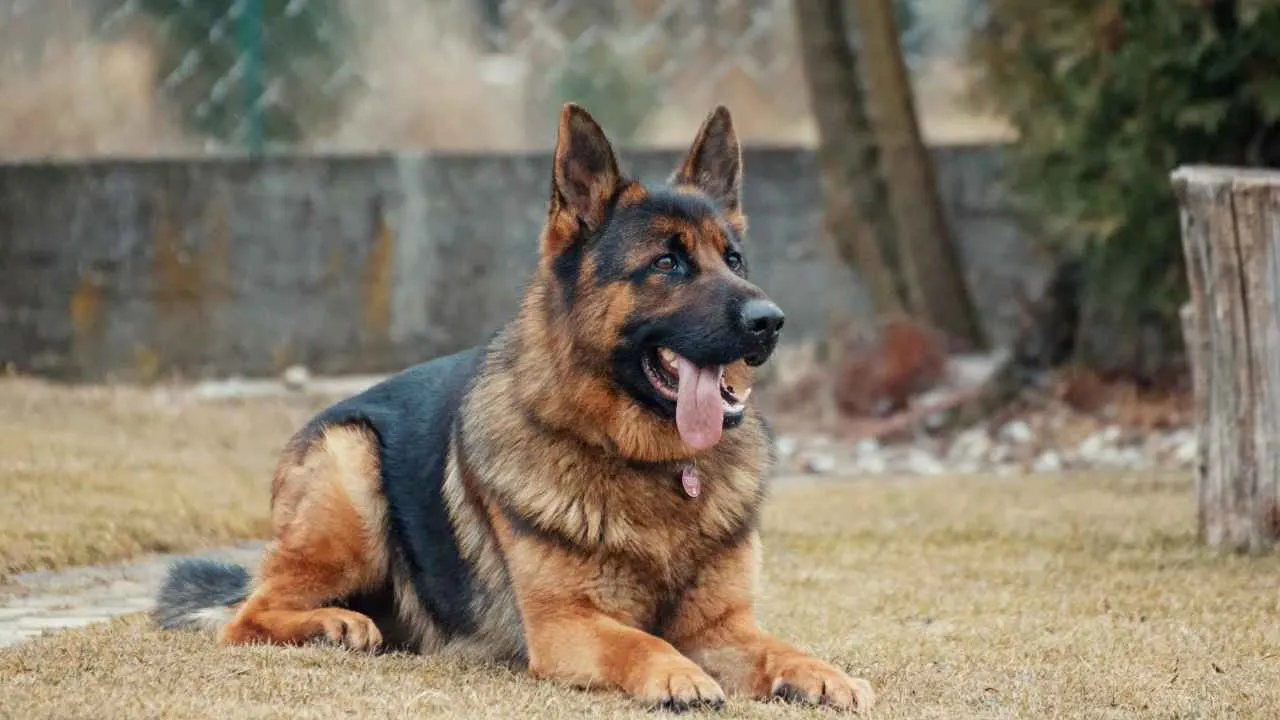
With roots tracing back to 19th-century Germany, the German Shepherd was originally bred to herd and protect flocks. Known as one of the most intelligent and versatile breeds, they excel in a range of roles—from military and police work to being loyal family companions.
This breed belongs to the herding group and boasts a powerful frame, standing 22 to 26 inches tall and weighing between 50 to 90 pounds. Their life expectancy ranges from 9 to 13 years.
Distinct features include a double coat in shades like black and tan, a strong build, and an alert, noble expression. Their intelligence, coupled with loyalty and courage, makes them natural leaders and fast learners.
Exercise
German Shepherds require substantial physical and mental stimulation to remain content. Ideally, they should receive 1 to 2 hours of daily exercise, which can include brisk walks, agility drills, obedience training, or herding games.
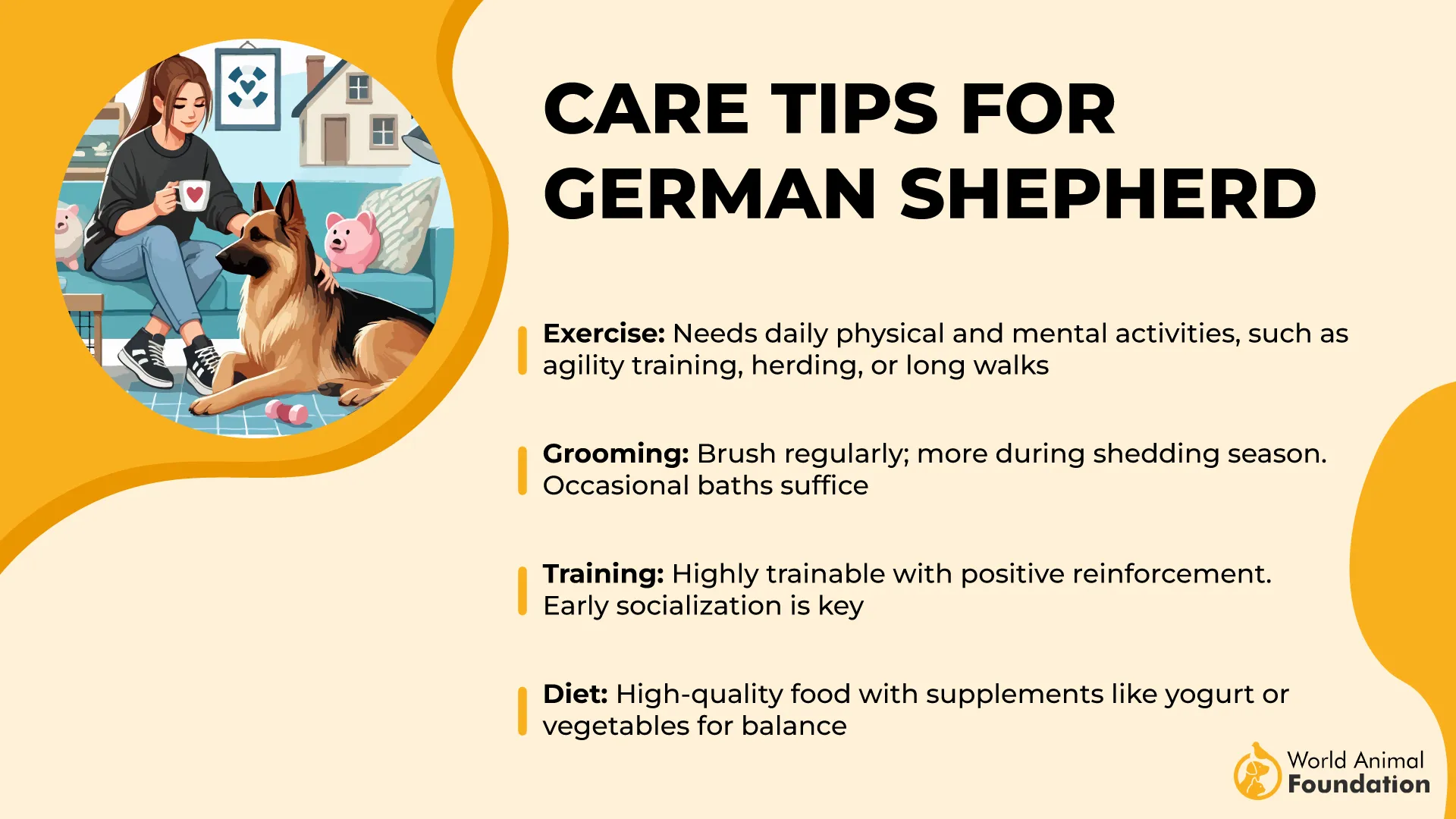
These active dogs thrive when they have a job to do and will excel in environments where their intelligence is consistently challenged. Without enough activity, they may become bored or develop destructive habits.
Fun Fact: Before becoming service icons, German Shepherds were first celebrated for their sheep-herding skills and continue to impress with their work ethic today.
9. German Shorthaired Pointer
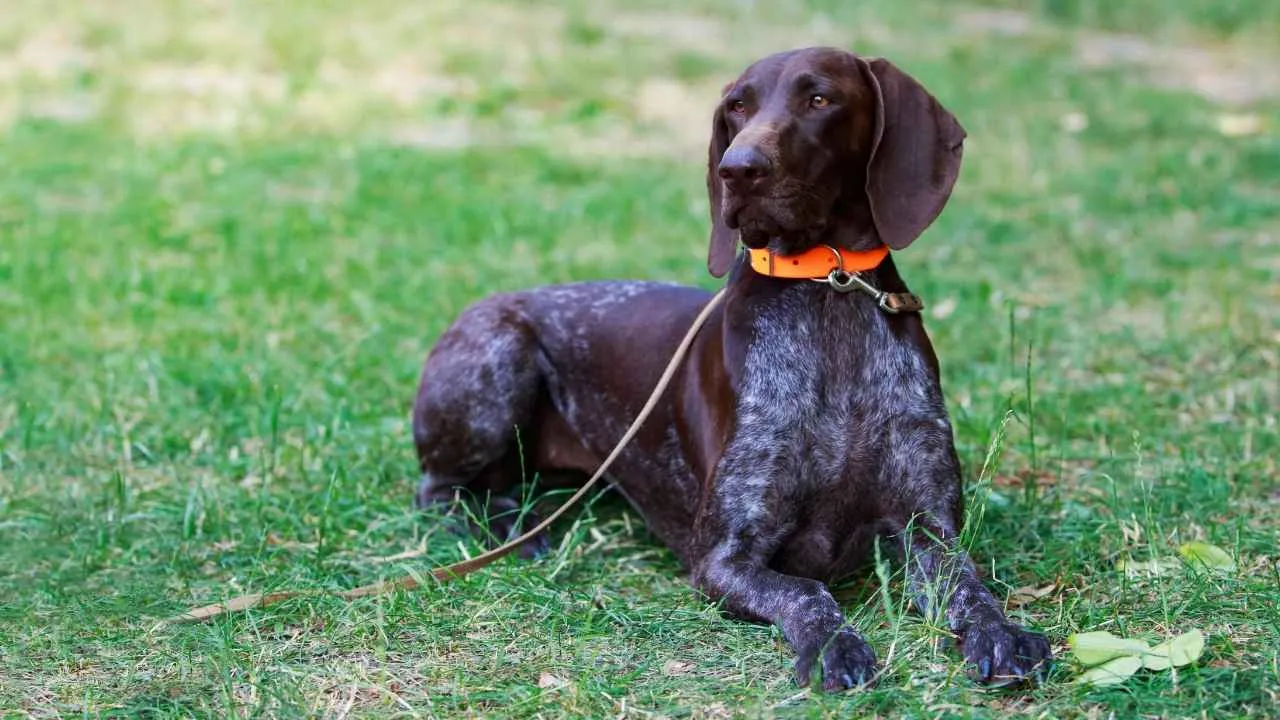
The German Shorthaired Pointer (GSP) is a regal, medium-sized breed known for its intelligence, athleticism, and adaptability. Originating in 19th-century Germany, this versatile hunting dog was bred to perform various tasks, including tracking, pointing, and retrieving. Males typically stand between 23 to 25 inches tall and weigh 55 to 70 pounds, while females are slightly smaller.
These highly intelligent dog breeds sport a sleek, short coat in liver or liver-and-white patterns, and their expressive dark eyes reveal their alert and eager nature. GSPs fall under the sporting group and have a lifespan of 10 to 12 years. Their webbed feet and powerful build make them exceptional swimmers and ideal companions for active families or individuals who enjoy outdoor adventures.
Exercise
German Shorthaired Pointers are high-energy dogs that require 60 to 90 minutes of vigorous daily exercise to stay physically and mentally healthy. Activities like running, swimming, fetch, and organized dog sports help meet their exercise needs.
They also enjoy canine games that stimulate their sharp minds, but due to their poor road sense, off-leash play should always be done in secure areas. Without proper activity, GSPs may become restless and resort to undesirable behaviors.
Fun Fact: These energetic dogs are affectionately known as the “perfect pointer” for their all-around skills in fieldwork and family life.
Conclusion
When choosing a canine companion with brains and brawn, it’s hard to overlook the remarkable mental agility that certain breeds naturally possess. Whether you’re drawn to a classic herding dog like the Shetland Sheepdog, known for its sharp instincts and responsive behavior, or marvel at breeds that dominate the smartest dog breeds list, intelligence manifests in many forms. From quick learning to impressive problem-solving, dog intelligence can shape how easily a pup fits into your home—and how much you can challenge and engage them.
Breeds like the Doberman Pinscher and German Shorthaired Pointer aren’t just smart—they’re purposeful. Whether serving as loyal police dogs or tackling real-world challenges in search and rescue missions, their minds are always active and alert. Many of these rescue dogs thrive when given tasks that push their limits. Understanding what drives these intelligent pups ensures you pick a breed that matches your lifestyle and keeps both dog and owner mentally fulfilled.


